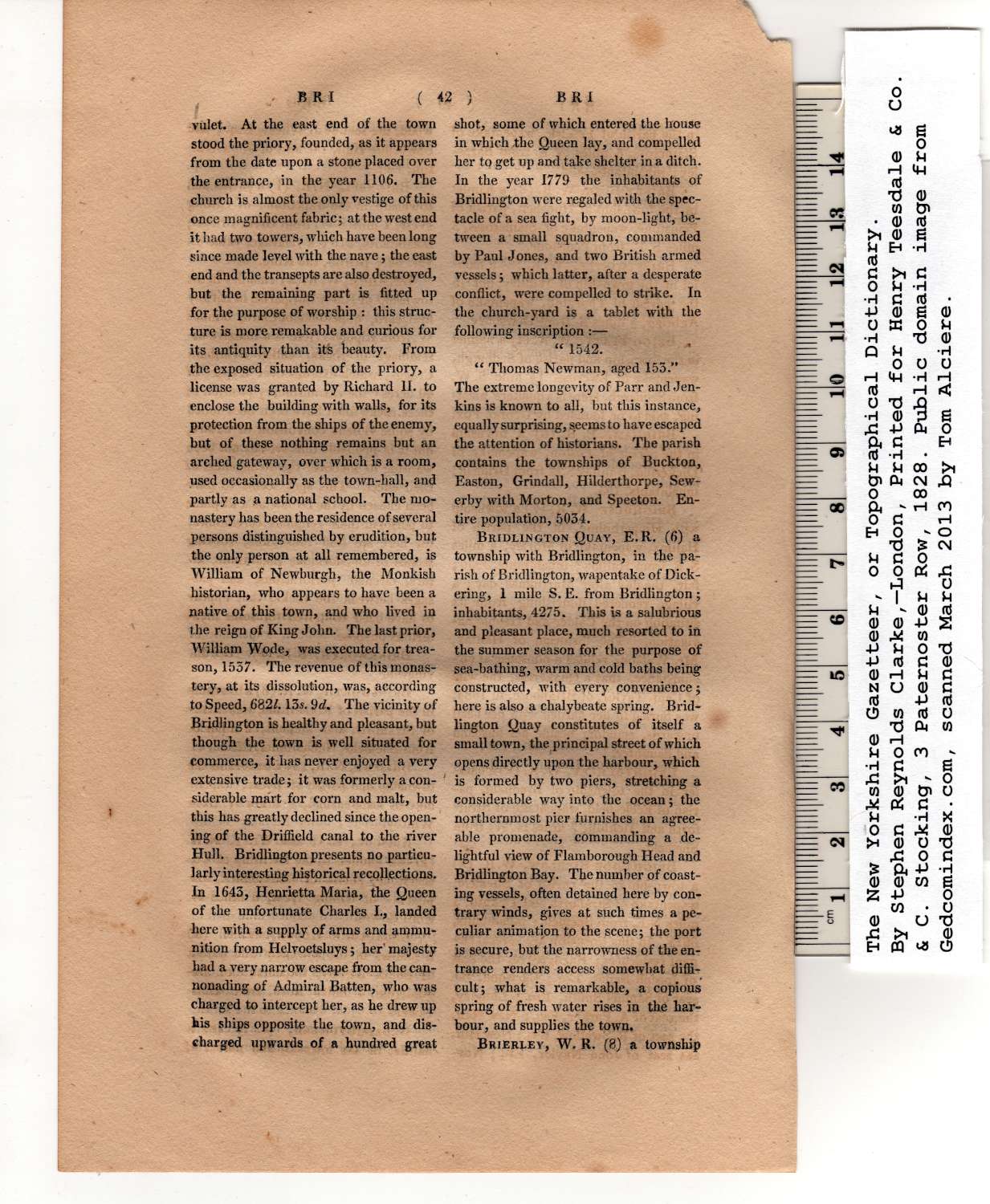|
vulet. At the east end of the town
stood the priory, founded, as it appears
from the date upon a stone placed over
the entrance, in the year 1106. The
church is almost the only vestige of this
once magnificent fabric; at the west end
it had two towers, which have been long
since made level with the nave; the east
end and the transepts are also destroyed,
but the remaining part is fitted up
for the purpose of worship : this struc-
ture is more remakable and curious for
its antiquity than its beauty. From
the exposed situation of the priory, a
license was granted by Richard II. to
enclose the building with walls, for its
protection from the ships of the enemy,
but of these nothing remains but an
arched gateway, over which is a room,
used occasionally as the town-hall, and
partly as a national school. The mo-
nastery has been the residence of several
persons distinguished by erudition, but
the only person at all remembered, is
William of Newburgh, the Monkish
historian, who appears to have been a
native of this town, and who lived in
the reign of King John. The last prior,
William Wode, was executed for trea-
son, 1537. The revenue of this monas-
tery, at its dissolution, was, according
to Speed, 682/. 13s. 9d„ The vicinity of
Bridlington is healthy and pleasant, but
though the town is well situated for
commerce, it has never enjoyed a very
extensive trade; it was formerly a con-
siderable mart for corn and malt, but
this has greatly declined since the open-
ing of the Driffield canal to the river
Hull. Bridlington presents no particu-
larly interesting historical recollections.
In 1643, Henrietta Maria, the Queen
of the unfortunate Charles I., landed
here with a supply of arms and ammu-
nition from Helvoetsluys; her' majesty
had a very narrow escape from the can-
nonading of Admiral Batten, who was
charged to intercept her, as he drew up
his ships opposite the town, and dis-
charged upwards of a hundred great
shot, some of which entered the house
in which the Queen lay, and compelled
her to get up and take shelter in a ditch.
In the year 1779 the inhabitants of
Bridlington were regaled with the spec-
tacle of a sea fight, by moon-light, be-
tween a small squadron, commanded
by Paul J ones, and two British armed
vessels; which latter, after a desperate
conflict, were compelled to strike. In
the church-yard is a tablet with the
following inscription:— |
“ 1542.
“ Thomas Newman, aged 153.”
The extreme longevity of Parr and Jen-
kins is known to all, but this instance,
equally surprising, seems to have escaped
the attention of historians. The parish
contains the townships of Buckton,
Easton, Grindall, Hilderthorpe, Sew-
erby with Morton, and Speeton. En-
tire population, 5034.
Bridlington Quay, E.R. (6) a
township with Bridlington, in the pa-
rish of Bridlington, wapentake of Dick-
ering, 1 mile S. E. from Bridlington ;
inhabitants, 4275. This is a salubrious
and pleasant place, much resorted to in
the summer season for the purpose of
sea-bathing, warm and cold baths being
constructed, with every convenience;
here is also a chalybeate spring. Brid-
lington Quay constitutes of itself a
small town, the principal street of which
opens directly upon the harbour, which
is formed by two piers, stretching a
considerable way into the ocean; the
northernmost pier furnishes an agree-
able promenade, commanding a de-
lightful view of Flamborough Head and
Bridlington Bay. The number of coast-
ing vessels, often detained here by con-
trary winds, gives at such times a pe-
culiar animation to the scene; the port
is secure, but the narrowness of the en-
trance renders access somewhat diffi-
cult; what is remarkable, a copious
spring of fresh water rises in the har-
bour, and supplies the town.
Brierley, W. R. (8) a township |
